Who was Valery Legasov, the Soviet scientist that saved the world from Chernobyl?
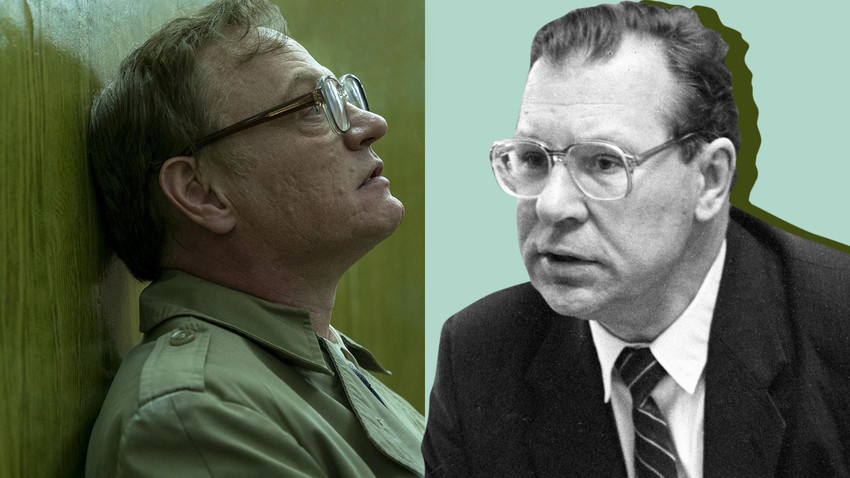
A man in a sweater and large horn-rimmed glasses sits in a kitchen listening to his own voice coming from a cassette player. After recording five audio tapes containing information about Chernobyl, he goes outside to hide them away from the watchful eye of KGB agents. Having put the tapes in the ventilation system of the house, he returns home, feeds his cat, smokes a cigarette, and hangs himself…
This opening scene of HBO’s ‘Chernobyl’ mini-series sets the tone for the horrific story of the 1986 nuclear disaster and Valery Legasov, a prominent Soviet inorganic chemist, who played a key role in Chernobyl’s response team and subsequent investigation into its causes.

It was him who insisted on the evacuation of the neighboring town of Pripyat and his decisions that helped to limit the impact of the catastrophe that threatened Europe. Legasov was also the person who delivered a five-hour oral report on the causes of the disaster at the International Atomic Energy Agency (IAEA) in Vienna - an honest and detailed report that calmed down the international community but angered colleagues at home.
But how did an inorganic chemist and radiochemistry expert find himself dealing with nuclear disaster? And what made him take his own life?
The road to Chernobyl
Born in 1936 in Tula (173 km south of Moscow), Valery chose his career path early on. An excellent student and a born leader, he could have chosen any university, thanks to his top marks at school, but set his mind on the Mendeleev Moscow Institute of Chemistry and Technology, which prepared specialists for the nuclear industry and energy sector.
Following his brilliant thesis work, Valery received an offer to do a Ph.D. at the Kurchatov Institute of Atomic Energy, but didn’t accept the offer right away - he was eager to go to the Siberian Chemical Plant in Tomsk (aka Seversk) to work on the development of plutonium for nuclear weapons.
After two years at the plant, he finally joined the Kurchatov Institute. At the age of 36, he was awarded a doctorate of chemistry, and at the age of 45 - became one of the youngest members of the Russian Academy of Sciences (RAS). There, Legasov built his name as one of the most prominent scientists in the field of inorganic chemistry - ie. the chemistry of noble gases. For the work in this field (most notably for the Bartlett-Legasov effect) Valery received numerous state awards.
Despite his significant work, Valery’s specialty wasn’t in nuclear reactors. It was almost by accident that he found himself included in the state commission on response to the Chernobyl disaster on April 26, 1986, his daughter Inga Legasova recalls. “He wasn’t meant to be in Chernobyl. His specialty was ‘physical chemistry’, he worked on explosives,” she explains (in Russian).
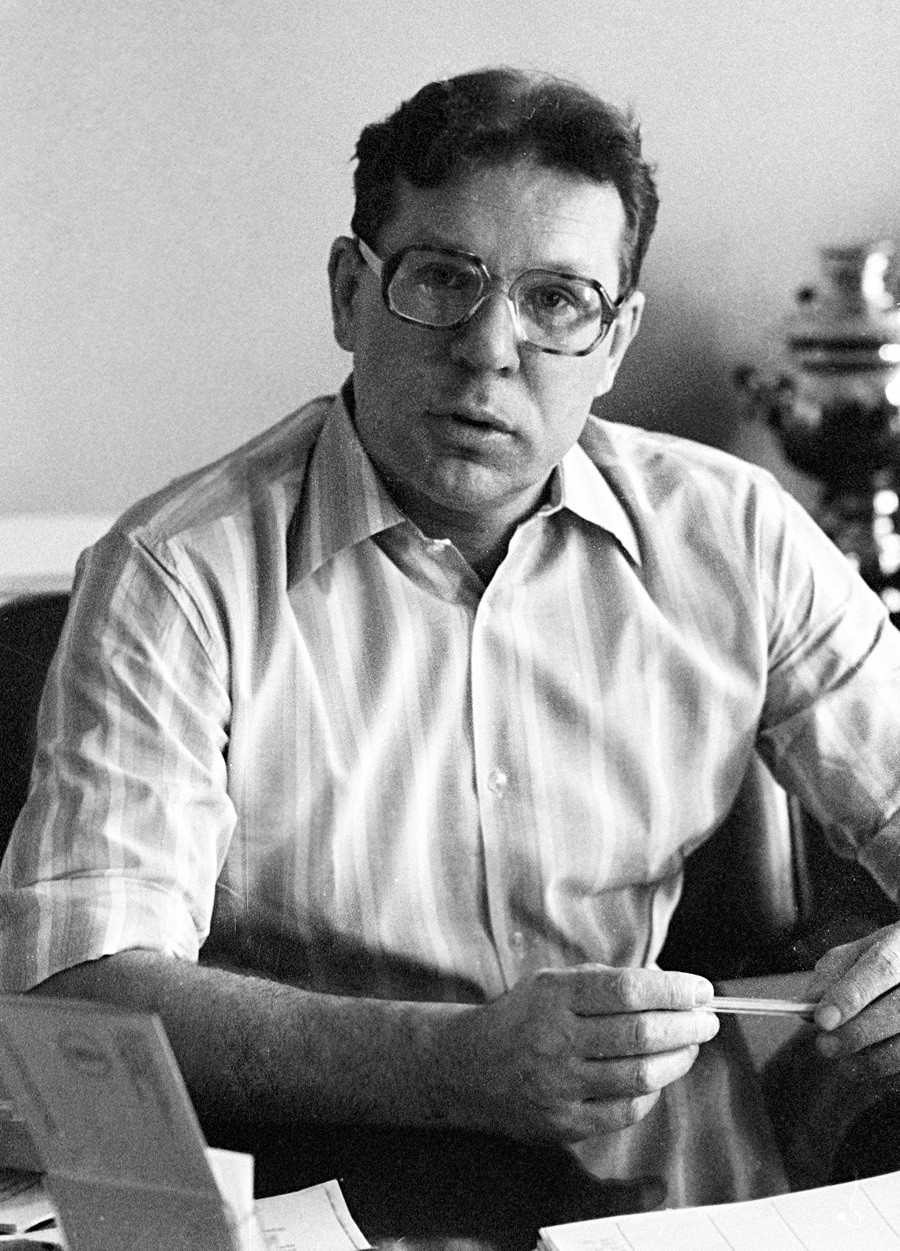
Valery Legasov in 1983
Alexander Krasavin/Sputnik“April 26 was Saturday. And father was attending a meeting of the RAS Presidium with academic [Anatoly] Alexandrov (who was president of the RAS at the time). Anatoly got a call via the ‘vertushka’ [the nickname for a closed state telephone line]. A scientist was needed to join the state commission and all Alexandrov’s deputies from the Kurchatov Institute were unreachable. The state plane was already waiting. So my father went to Vnukovo [airport] and left for Chernobyl the same day.”
There could have been another reason for choosing Legasov - before the disaster took place, he had stressed the importance of new security methodology for preventing large catastrophes and, as his daughter recalls, pointed to the problems of RBMK-1000 reactors (the one that exploded) and the risks of operating nuclear reactors, offering to secure them with a protective shield - a proposal that was denied by colleagues.
Like in 1941, but even worse
Upon arrival, Valery immersed himself into the emergency response work: he insisted on the evacuation of the population of Pripyat nearby (which happened on Apr. 27) and worked on mitigating the consequences of the reactor explosion. By the morning of April 26 and Legasov’s arrival, the fire has been extinguished, but a massive amount of radioactive elements were being pumped into the atmosphere and what was left of the reactor continued to pose a serious threat. “There was such unpreparedness, such disorder, such fear. Like in 1941, but even worse,” Legasov later recalled.
Legasov worked without rest, often not paying attention to the dosimeter, a device that measures dose uptake of external ionizing radiation. “He was the only scientist working at the site,” his daughter recalls. “He understood quite well what he was doing and how much radiation he was being exposed to.”
He would fly over Chernobyl a few times a day, and it was under his command that it was decided to dump boron carbide in large quantities from helicopters to act as a neutron absorber and prevent any renewed chain reaction. Later, dolomite was also added to act as a heat sink and a source of carbon dioxide to smother the fire. Lead was included as a radiation absorber, as well as sand and clay, which it was hoped would prevent the release of particulates. The total amount of materials dumped on the reactor weighed about 5,000 tons, including about 40 tons of boron compounds, 2,400 tons of lead, 1,800 tons of sand and clay, and 600 tons of dolomite, as well as sodium phosphate and polymer liquids (Bu93). Later came the steps to prevent melted radioactive material from reaching the water in the lower cooling system, so a tunnel was built to prevent radioactives from reaching groundwater.
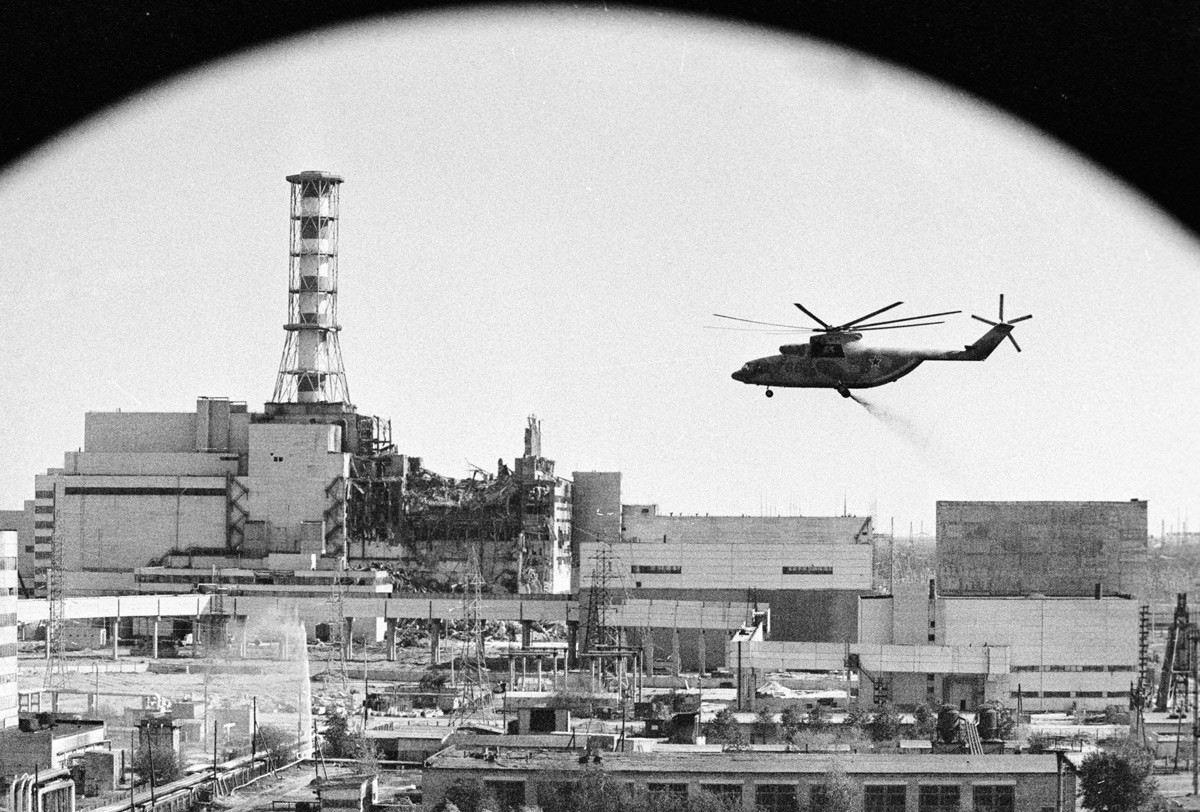
Response work at Chernobyl
Igor Kostin/SputnikEven though one was only allowed to spend a maximum of two weeks at the site, Legasov spent four months (!) there, and was exposed to 100 REM (Roentgen Equivalent Man) - four times the allowed maximum of 25 REM. On May 5, he already showed signs of radiation sickness (nuclear tan and hair loss) and by May 15, cough and insomnia began to kick in.
The Vienna report
In August 1986, he was invited to speak at the IAEA in Vienna, presenting a report to foreign colleagues about the catastrophe and why it happened. Initially, it was head of state Mikhail Gorbachev who should have done it, but the leader decided it should be Legasov, a scientist who had worked at the site.
“A whole team of specialists worked on the report,” Inga Legasova remembers. “Father used to bring the documents home. Sometimes scientists and specialists would spend a few days at our place. Father checked the numbers over and over again. He wanted to make sure all of the information was absolutely true.”
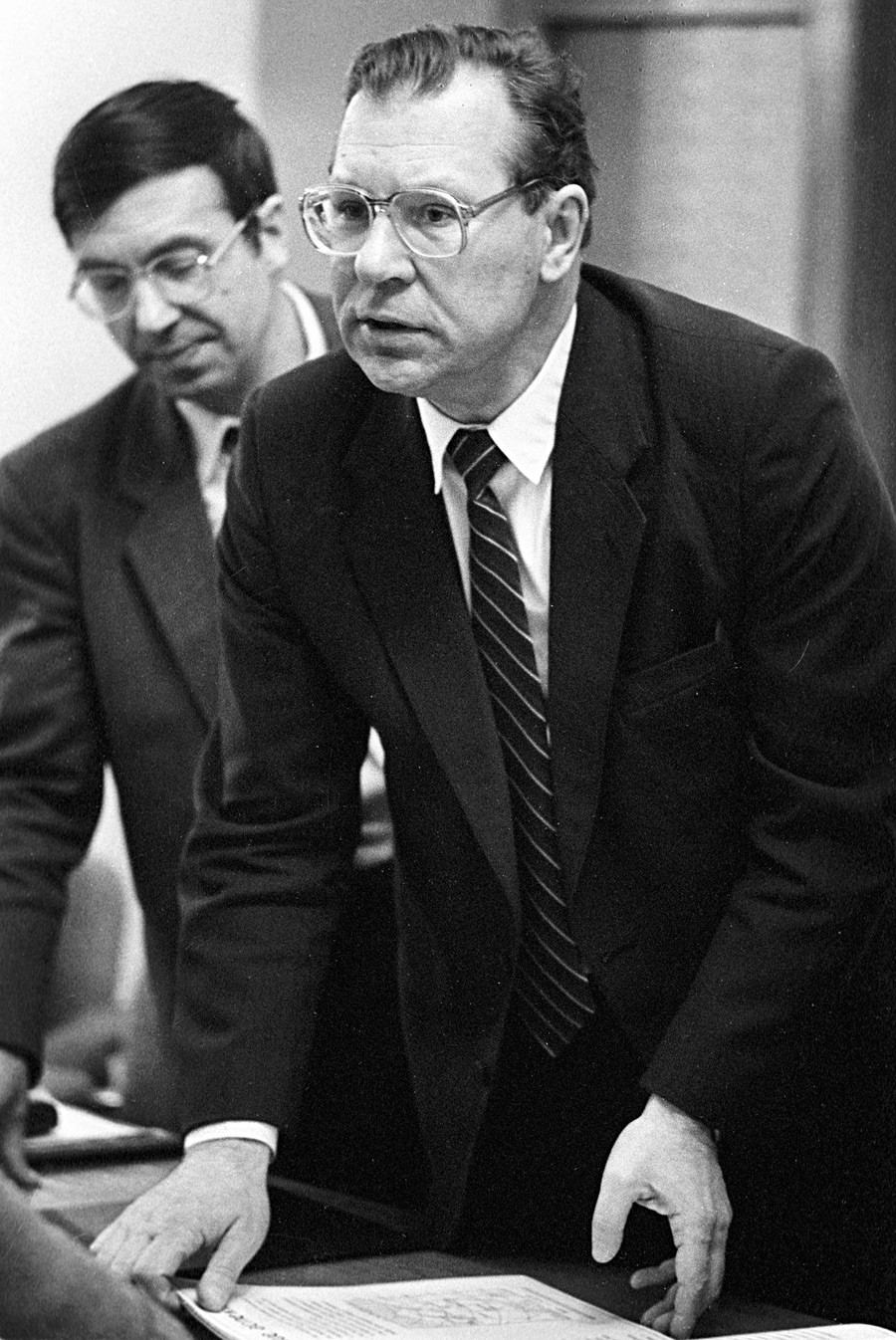
He came to the conclusion that the explosion was a result of a number of factors, including the reactor’s constructive flaws and human factor - the staff was unaware of the flaws and that the tests they had carried out could have provoked an explosion.
The five-hour report in Vienna helped to calm down the international community and earn Legasov praise abroad, but authorities and some fellow scientists back home thought the report revealed classified information. “He saw his main goal was not in justifying the Soviet Union and hide certain information, but, on the contrary, to educate the world community on what to do in such situations,” Inga told Russian newspaper, MK.
“They gave the information that was allowed and the report was honest… I think the problem was not in secret data. The IAEA report made a huge impact and father instantly became very popular. He was named Person of the Year in Europe and was included in the list of the top 10 scientists in the world. This made some of his colleagues jealous,” she adds.
The last days
The next two years were difficult for Legasov, both mentally and physically. He felt the ill will from his colleagues and was depressed by the lack of initiatives to prevent more catastrophes like Chernobyl in the future. Allegedly, Mikhail Gorbachev crossed his name out of the list of those to be awarded for the response work at Chernobyl, noting that “other scientists don’t recommend it”.
“For some reason, many believe that my father was disappointed by the fact that he wasn’t awarded. But he wasn’t, he wasn’t an ambitious man,” his daughter believes. “He was a patriot and grieved for what that happened, for the country, for people that suffered… His empathy was disturbed and, it seems, it did ‘eat him up from the inside’.”
Plus, as she recalls, the radiation sickness didn’t make it easier. “Gradually he stopped eating, stopped sleeping… He knew well what will follow next, how painful it will be. Probably, he didn’t want to be a burden on my mother. He adored her.”
Only eight years after his suicide in 1996 did Legasov receive a posthumous honorary title of Hero of the Russian Federation for the "courage and heroism" shown in his investigation of the disaster, awarded by then-president Boris Yeltsin.
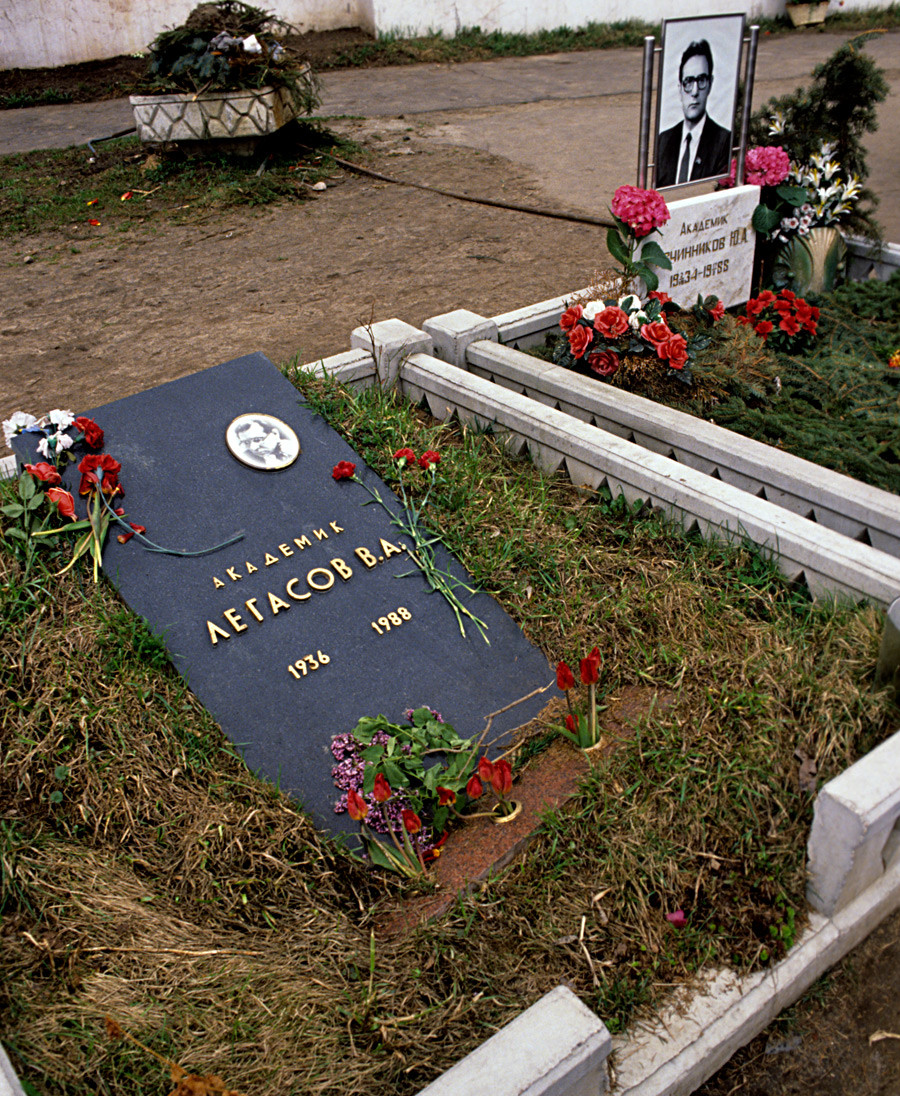
The grave of Valery Legasov (1936-1988) at the Novodevichye Cemetery in Moscow. 1989
Vladimir Vyatkin/SputnikIf using any of Russia Beyond's content, partly or in full, always provide an active hyperlink to the original material.
Subscribe
to our newsletter!
Get the week's best stories straight to your inbox